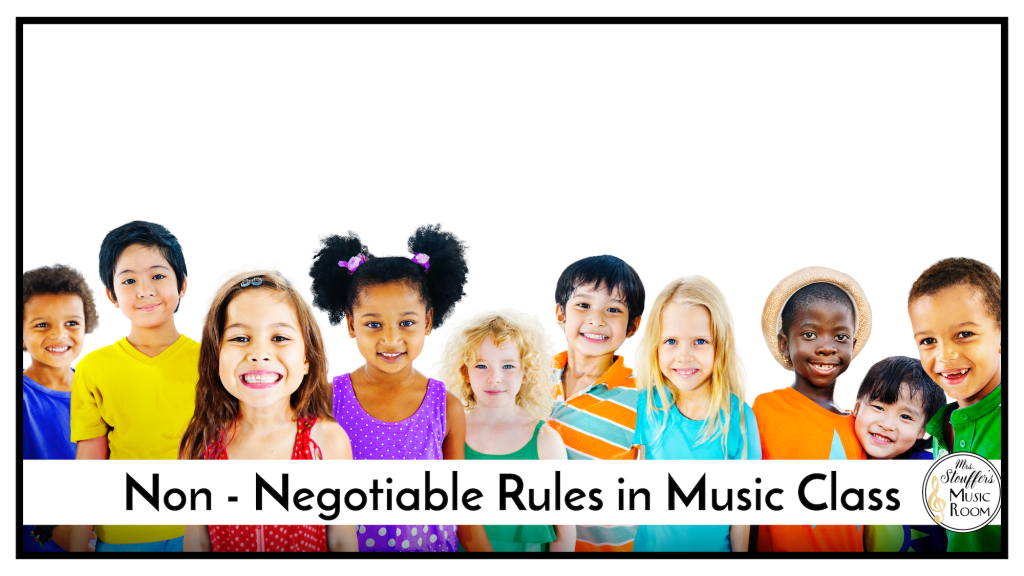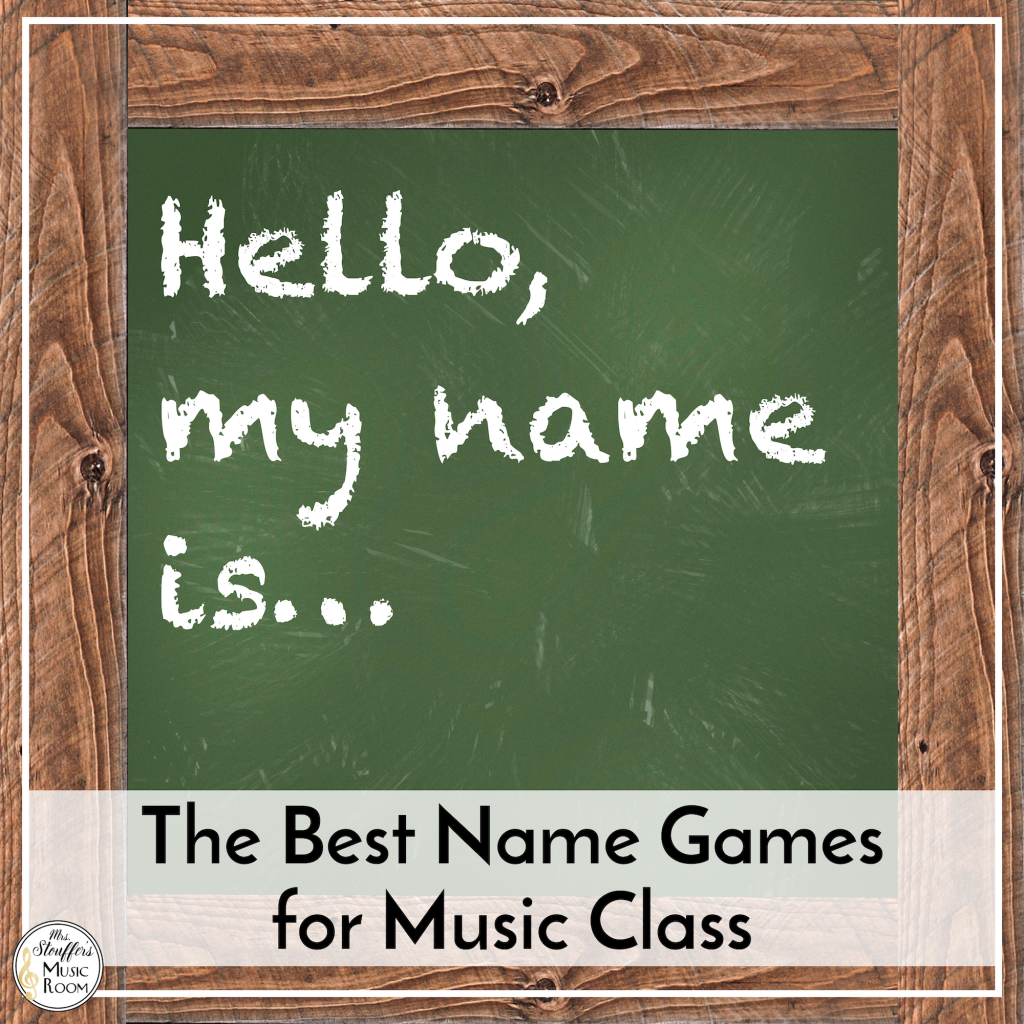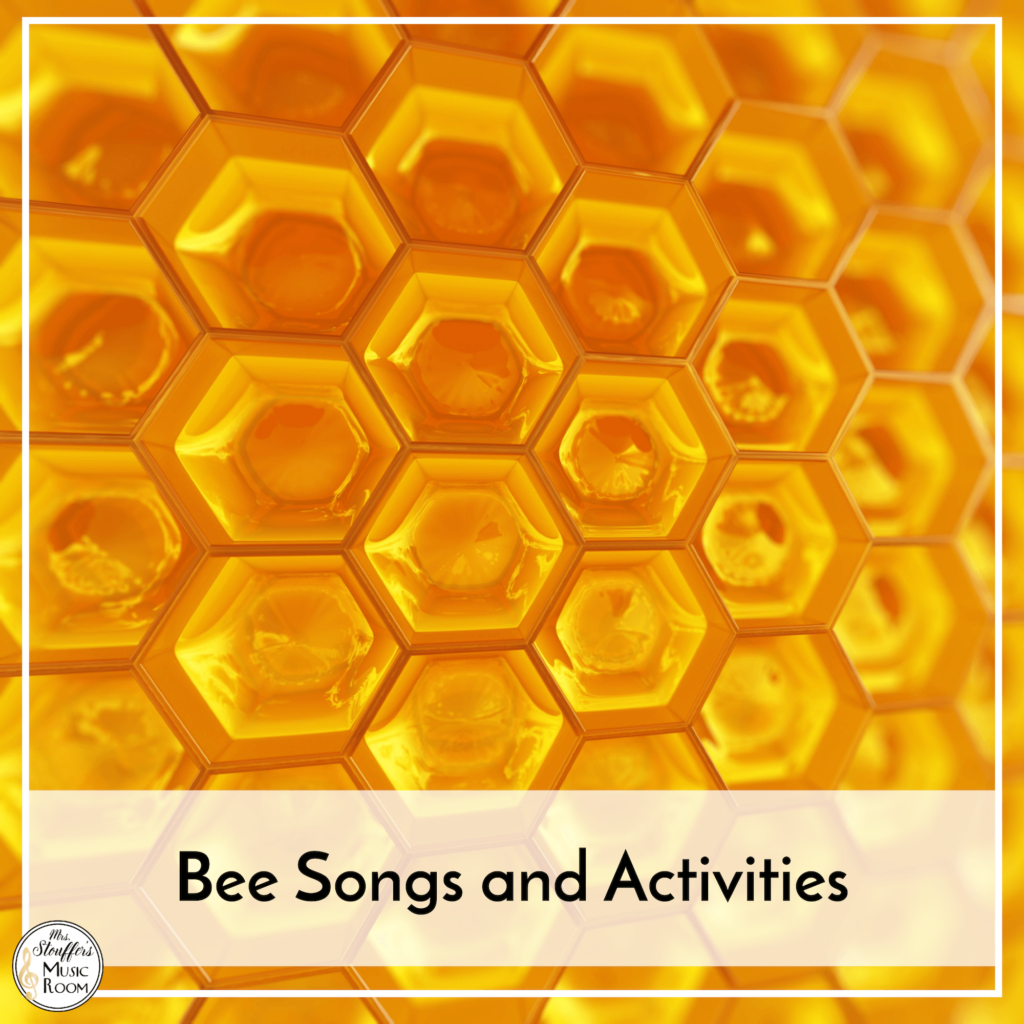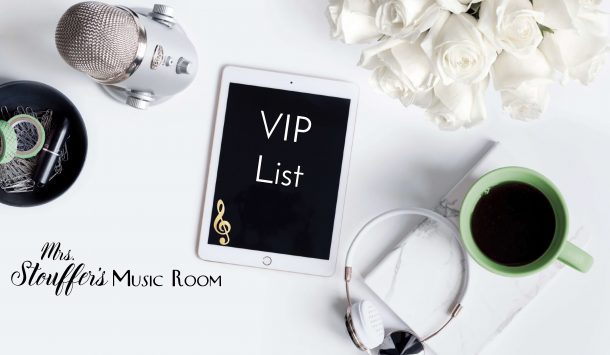So classroom management is something that takes time to fine tune, but it’s something that really should take tons of our attention. Non-negotiable rules in music class are the things that are our MUST do, shouldn’t ever happen rules.
A good management plan is something that we should nurture right away and continue to focus on as educators. Not only will it make your life easier, but it sets kids up for success. The next few weeks we’ll be taking a look at some of the things that create a great management plan. This week, we’ll start with non-negotiable rules.

1. Safe Space (Be Kind)
This is my number one rule. You may not make fun of a classmate. You may not criticize someone’s work. With older students this means that if you are giving constructive criticism you music sandwich positives with things to work on. You may not bully, belittle, etc. If there is an argument, you both get time to talk. How you phrase this with your kids may not be “safe space” but it helps create an environment where students are always able to share an idea without someone making fun of them.
This is something you have to create yourself by creating a culture of kindness. It is also important to shut down anything that breaks this rule as quickly as possible. It helps students know the language is not acceptable.
This is also important to note that incorporating music from multiple cultures, incorporating children’s literature with diverse representation, and highlighting musicians from different cultures is a large part of helping students feel supported and seen.
When saying this rule for students, there can be ways to phrase this to help students know that their creative efforts will be supported:
– For the littles – “be kind to our friends”
– Support all your friend’s work.
– Everyone is creative and has different ways to create. We support everyone’s work.
– All music is different, and we can learn from any of it.
However you choose to phrase it, it’s important to include.
2. Be Safe
My students know that my room is a fun space.
Sometimes fun uses balls, and chase games, and ridiculous trying to sing with marshmallows in our mouths. But my students know that if we get to a spot where an unsafe thing is happening, it gets SHUT. DOWN. Game over, the instruments go away, whatever we are working with that caused the unsafe choices, it goes away.
This is for being safe where another student can get hurt, or if we are damaging materials.
When you present a game, instrument or something that you see a potential risk, prep your students. Remind them of classroom behavior, how an instrument is treated, or rules during the chase game.
“If I see something that is unsafe, we will put it away right away. There will not be a second chance. This is your warning.”
Chances are, no one will break the rule because they don’t want to lose it.
Important Things to Consider…
With my younger students, I may remove from just the student engaging in the behavior with a timeout for only a minute or two. Before I let them join back in, I ask them if they are ready to follow the rule or if they can remind me of what was the unsafe behavior. Most of the time they say yes or can identify it, but that also depends on your student. Remember that you know your students best and there are always exceptions to the rule.
Some students may need an extra reminder or help showing the correct behavior and that is something you may need to do. If you have some students in the class that this would apply to, I don’t say “There will not be a second chance. This is your warning.” It’s important to meet your students where they are at so if this is a struggle area, some things will need to look different.
If you do have to remove something from a class for safety issues (from out of control behavior such as trying to tackle during a chase game, not accidental safety issues), don’t let that fun thing appear again for a long time. There was one time I had to take a ball game away from a class and they didn’t get another one for quite a while. When I finally brought it back, there was no messing around because they really wanted the game and the opportunity to prove they can handle it.
Hold Accountable
When a student breaks a non-negotiable, things stop. Hold them accountable. If it’s an unsafe behavior, remove the stimulus. If it’s a breakdown in kindness, it may be a discussion between two students, or a class discussion.
Using an adapted Socratic method in this situation is really helpful. The short answer of what this is, is using questions instead of answers. Simply telling them that something was unkind is not going to be helpful.
– Why did you say that?
– How would you feel if someone said that about you/to you/about your work?
– What can you say to a friend that is sad?
– How can you help N. feel less sad/hurt?
– What do you think could happen if you continued to throw the ball at the window?
– What did you do with the rhythm stick that hurt your friend?
– What if someone sitting next to you did that? What would happen?
Presenting the student(s) with questions instead of statements help them figure out what the problem was and how to fix it.
Presenting Non-Negotiables
By having a FEW rules, it can be really helpful for students to remember them. There isn’t a long list, and having two big ones encompasses most of the issues you are going to face that are a big deal.
When you talk about the rules with your kids, have them determine what that can look like. One third rule I like to add in with students but doesn’t quite have the same weight is “Be Respectful” – treating instruments carefully, stop talking when the teacher or others are talking, treat the things in the room the way you would want your toys, books, things treated, raise your hand, being too loud, etc. These rules will come up with your kids if you have a discussion with them., but they aren’t going to hold the same weight. (Think the difference between a kid who is slamming an instrument on the ground vs. one who is hitting a drum a little too hard because they are having a blast.)
Non-negotiable rules get shut down when broken. The others get reminders. Helping your students understand the difference between the big deal things and the ‘we’re all human and make mistakes’ rules also helps your students who may not understand social cues. The non-negotiables only encompass things that can cause damage.
One Last Thing…
I chose to present my rules with a positive twist. Instead of ‘don’t do this, don’t do that’, presenting them as positive help my students know:
– I trust they can do those behaviors
– I expect that they will succeed
I hope this has been helpful






